
CeCuCo:我行我素
CeCuCo: play your own way
面对这样一个复杂的研究项目、文化和社区中心的概念设计,noa*提出以下几点疑问:要采取什么样的形式体现灵活性?如何将自然融入项目中?以及建筑师在其中应该扮演怎样的角色?noa*认为,要想信任一个项目的未来,唯有把它收入囊中,亲自操刀。
For a complexresearch project - the prototyping of a Centre for Culture and Community -noa*questions what form flexibility takes, how nature can be embedded in theproject andhow far the role of thearchitect goes, in the belief that a project only works when people make it their own.
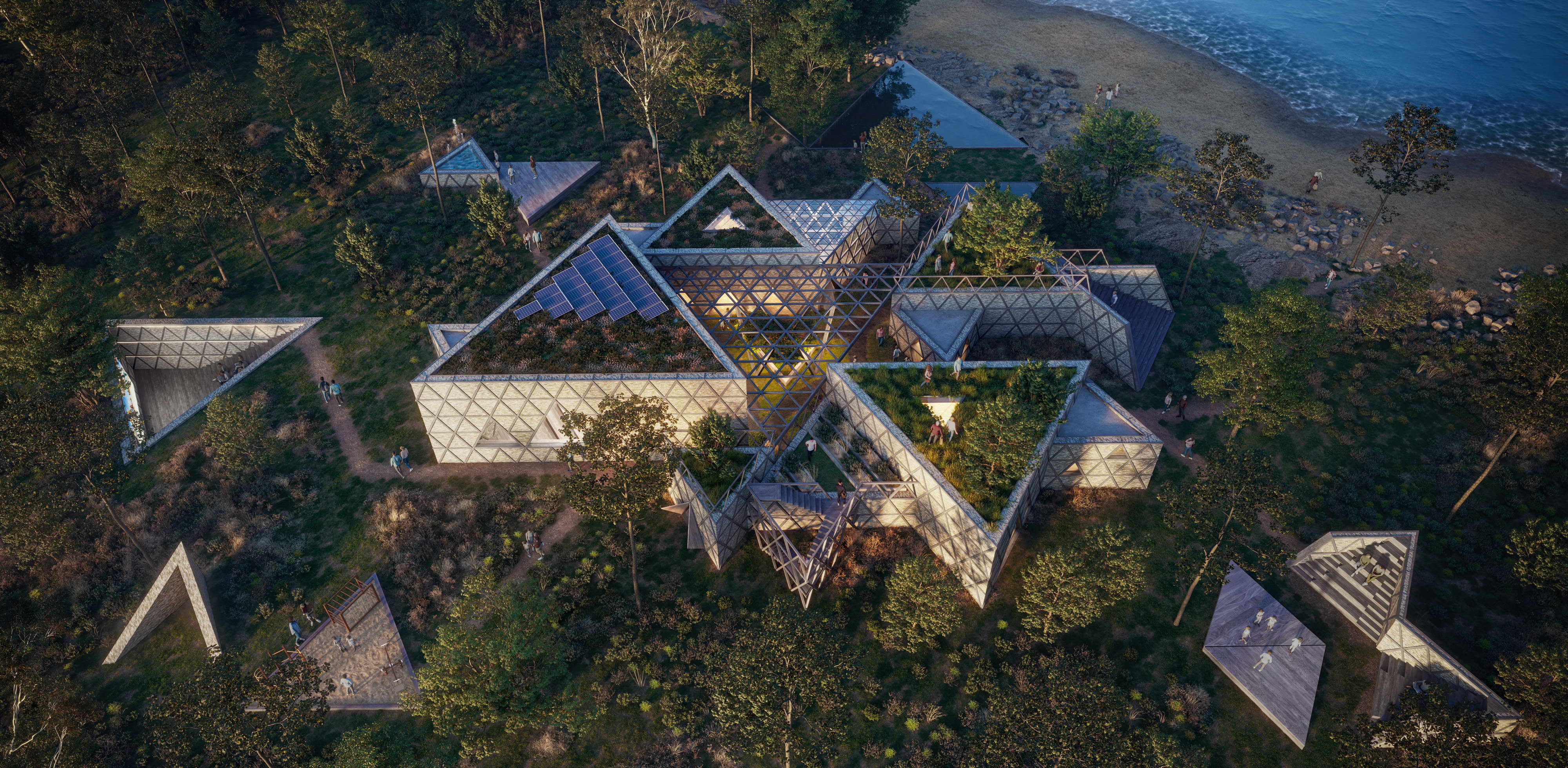
CeCuCo文化社会中心是一项具有野心的研究项目:一个没有固定环境的文化中心,能够自我改造以适应任何环境和用户。这是noa*对多功能空间的愿景,并转化为适用于所有情况的可持续模型。在无限的设计可能性中,从一开始就很清楚要采取哪个方向:即设计一个与内部环境息息相关的建筑,一个社区可以决定、行动和变换的灵活空间。
CeCuCo, Centre for Culture and Community, is a research project with anambitious task: thedesign of a cultural centrewithout a fixed context, capable of transforming itself to adapt to anyone and anywhere. This is noa*'s vision of amultifunctional space, translated into asustainable model which is versatile for all situations. Among the infinitedesign possibilities, it was clearfrom the very beginning which direction to take: to design an architecture that is not indifferent to what happens inside it, aflexible space in which the communitycan decide, act and makes her moves.

源自七巧板的灵感
LEARNING FROM TANGRAM
该项目的外形基于三角形设计,在平面和立面中以模块化方式重复。平面的三角形模块内接在3x3 m的正方形中,立面则内接在3x1.5 m中。使用易于组装的几何图形,有助于使文化中心根据环境的需要进行扩张或收缩。此外,在城市规划层面,三角形可以组合成多种形状,产生不同的空间类型,如平面、中庭或点状村庄。
The geometry ofthe project is based on an elementary form, the triangle, repeated modularly in both plan and elevation. In the first case, thetriangular module is inscribed in a 3x3 msquare, in the second in 3x1.5 m. Working with geometries easy to assemble allows the cultural centre to expand or contract according to theneeds of the context. In addition, on anurban planning level, the triangles can combine in many types of shapes, resulting in different space typologies like the slab, thecourtyard or the punctiform village.
▽平面的不同组合方式

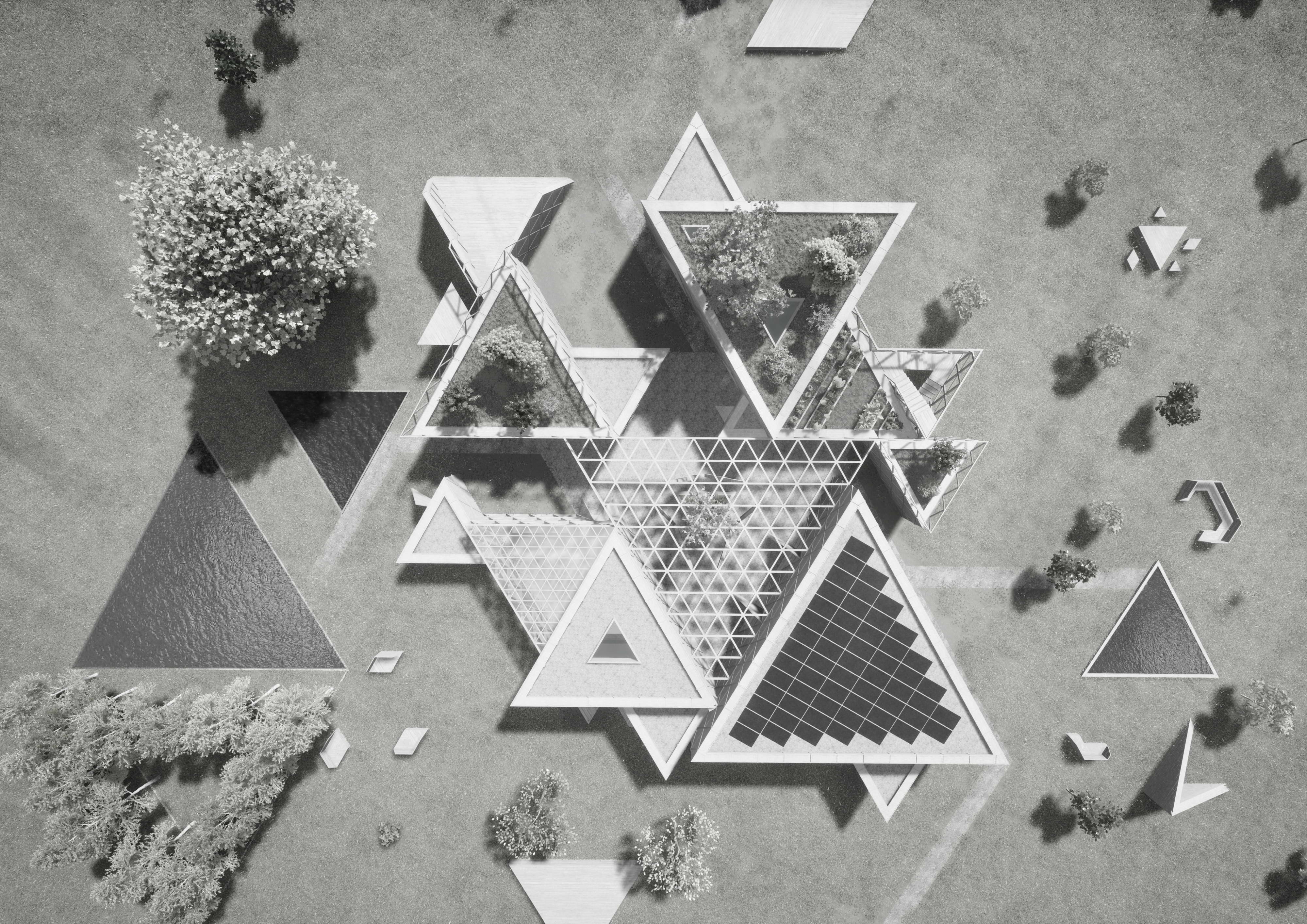
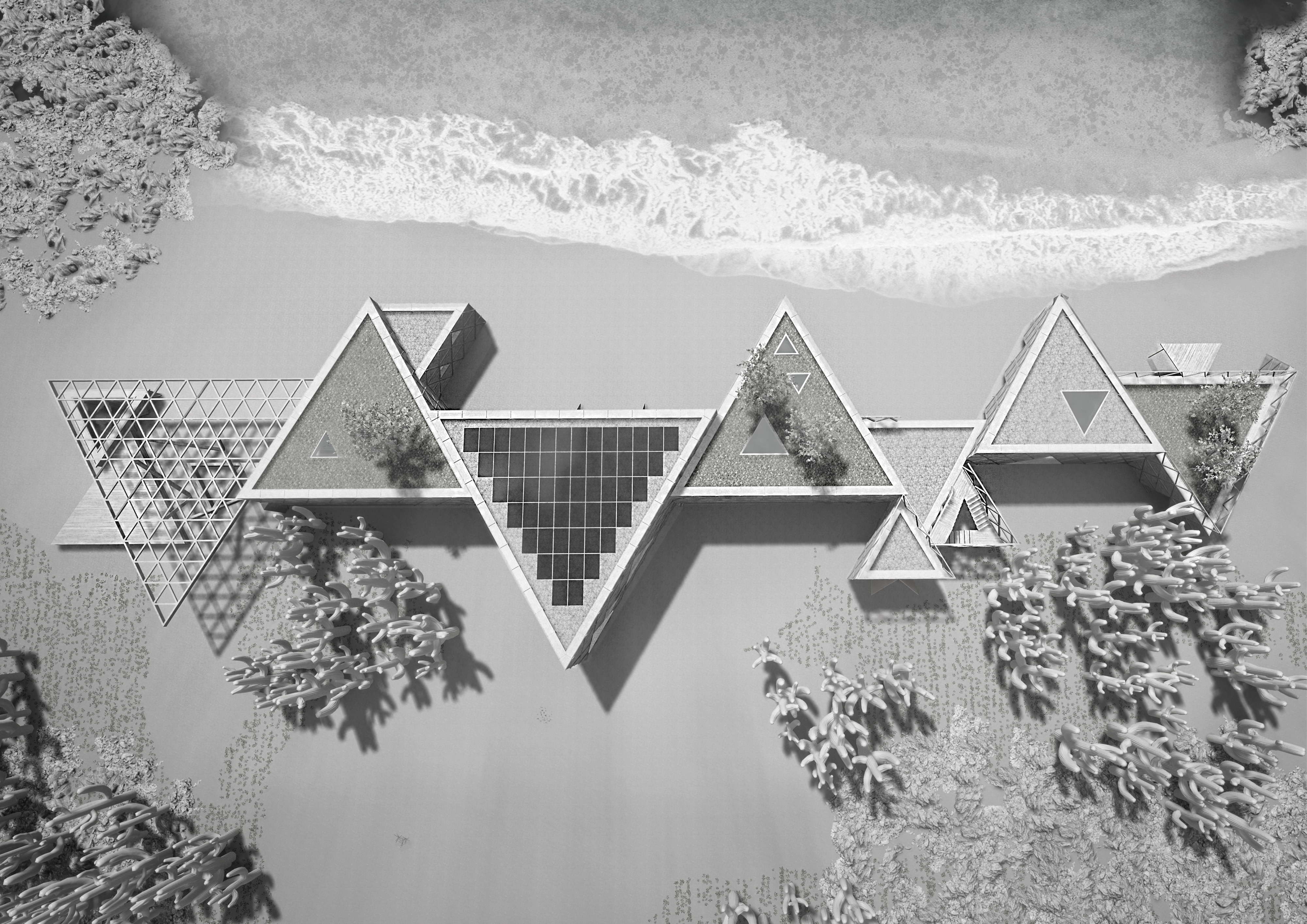
在立面上使用该模块可以应用各种配置,创建一种立面变形。noa*将高程想象成一个棋盘:一些元素可以按照一定的规则和方向移动,然后由人决定体验架构来控制。门可以移动、展开、打开门页、降低、升高、半开……窗户也是如此。由移动和反向移动组成的建筑不仅有趣,而且具有广泛的可能性,其中社区和建筑之间的作用与反作用赋予了最多样化的场景生命。
Using the module in the façade opens up to a variety of configurations, creating a kind of façade metamorphosis. noa*imagines the elevations as a chessboard: some elements can be moved, with certain rules and in certain directions, which it isthen up to the people whoexperience the architectureto control. Doors can be moved, fanned out, turned on their hinges, lowered, raised, ajar... and the same goes for windows. Awide range of possibilities for an intuitiveand playful architecture, made up of moves and countermoves, where the game of action and reaction between community andbuilding gives life to the most diversescenarios.
▽内部结构
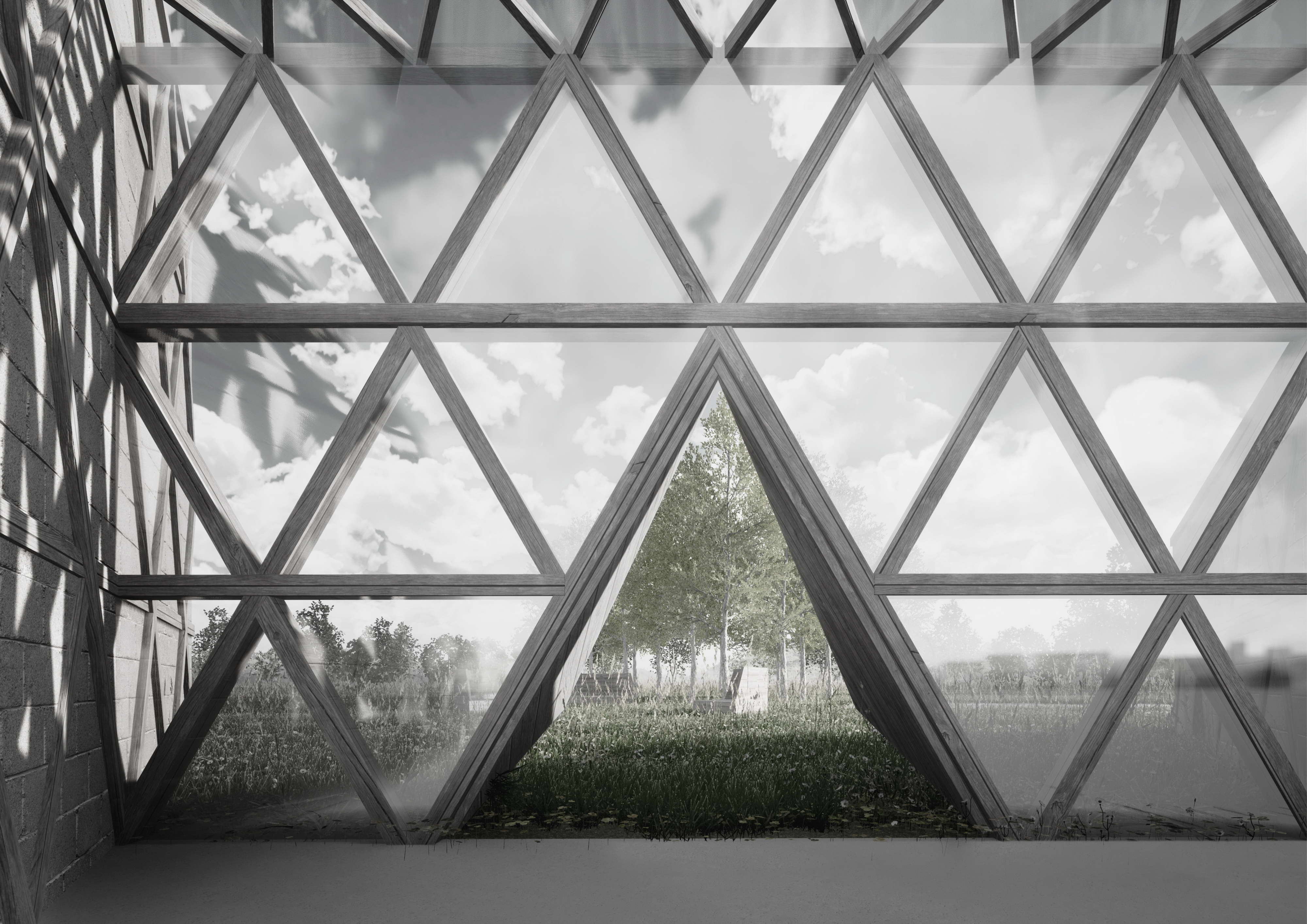

在定义功能性时,noa*首先调查了文化和社区中心,以期创建尽可能具有包容性的建筑。如何设计一个能够让孩子们聚在一起玩耍,供成年人看展览、以及青少年听音乐会相协调的空间?
When definingthe functional programme, noa* first investigated the needs of a cultural andcommunity centre as well asthe ways to create an architecture as inclusive as possible. How do you design a space that works in the same way for childrenwho meet to play, adults to watch anexhibition, teenagers to listen to a concert?

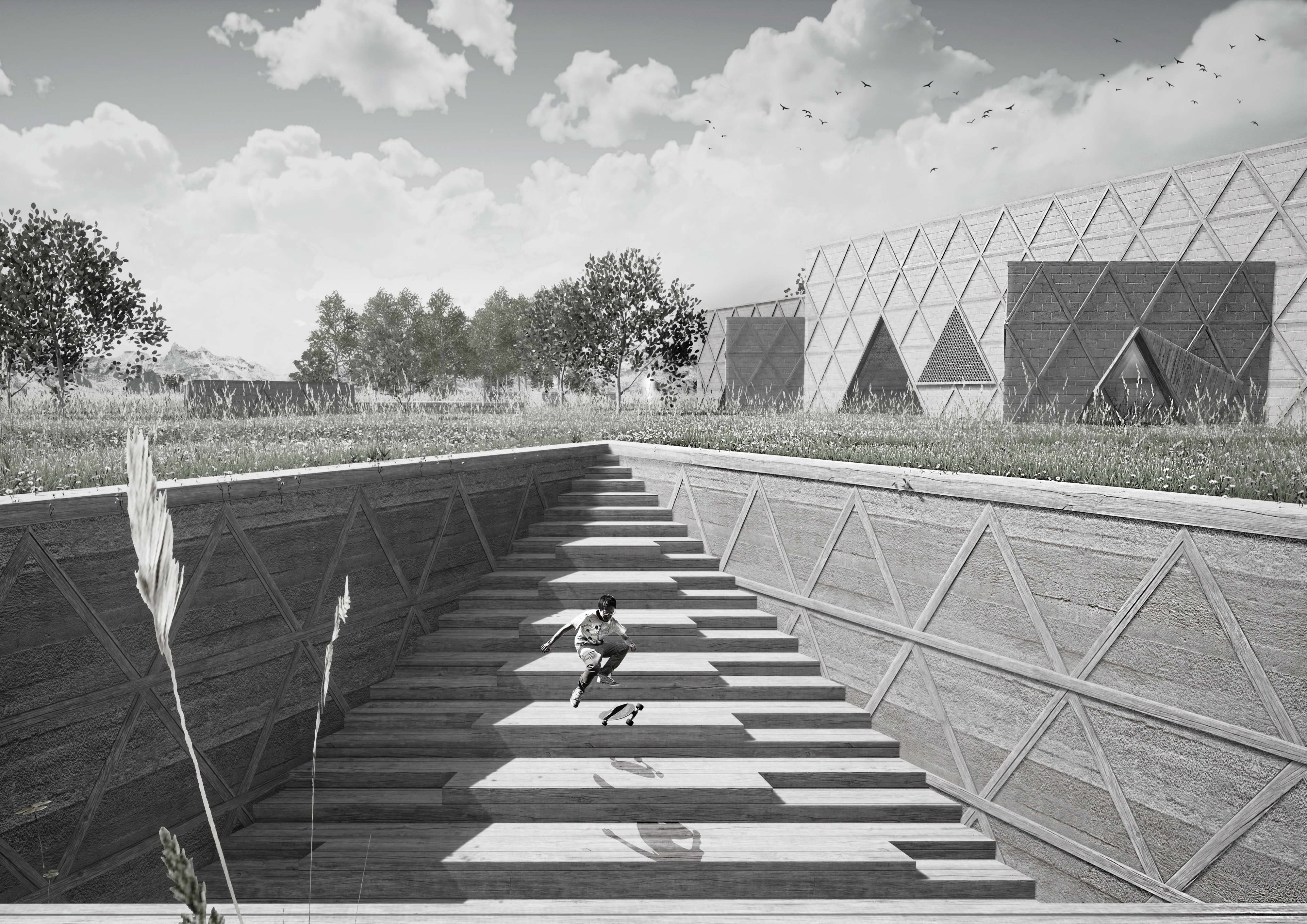
为解决这些问题,团队决定定义不同的空间以满足多种需求,而不是指定一个固定的功能列表。通过6种类型的平面图,从8到115平方米,中心的所有可能的活动都得到了容纳。例如,小模块容纳了艺术家的工作室、报摊、储藏室、管理办公室、楼梯和更衣室。在额外的小模块中,您可以找到售票处。在中等模块中,厕所、图书馆室和露天看台,因为并非所有模块都代表有盖空间。随着平面图更改为更大的尺寸,可能性会有所不同,最终形成了一整个大空间,有115平方米专为剧院和电影院而设计。
The naturalanswer to these questions was the decision to define different spaces capable of satisfying multiple needs, rather than specifying a fixed listof functions. Through 6 types of floorplans, ranging from 8 to 115 m2, all the possible activities of thecentre are accommodated. Forexample, the small module houses the artist's atelier, the newspaper stall, the storeroom, the management office, the staircase, andthe changing rooms. In the extra smallmodule, you can find a ticket office. In the medium module, the toilets, a library room, and the open-air bleachers, since not all modulesstand for covered spaces. As the floorplans change to the larger size, the possibilities vary, culminating in the large space, with 115 m2available,designed for theatre and cinema.
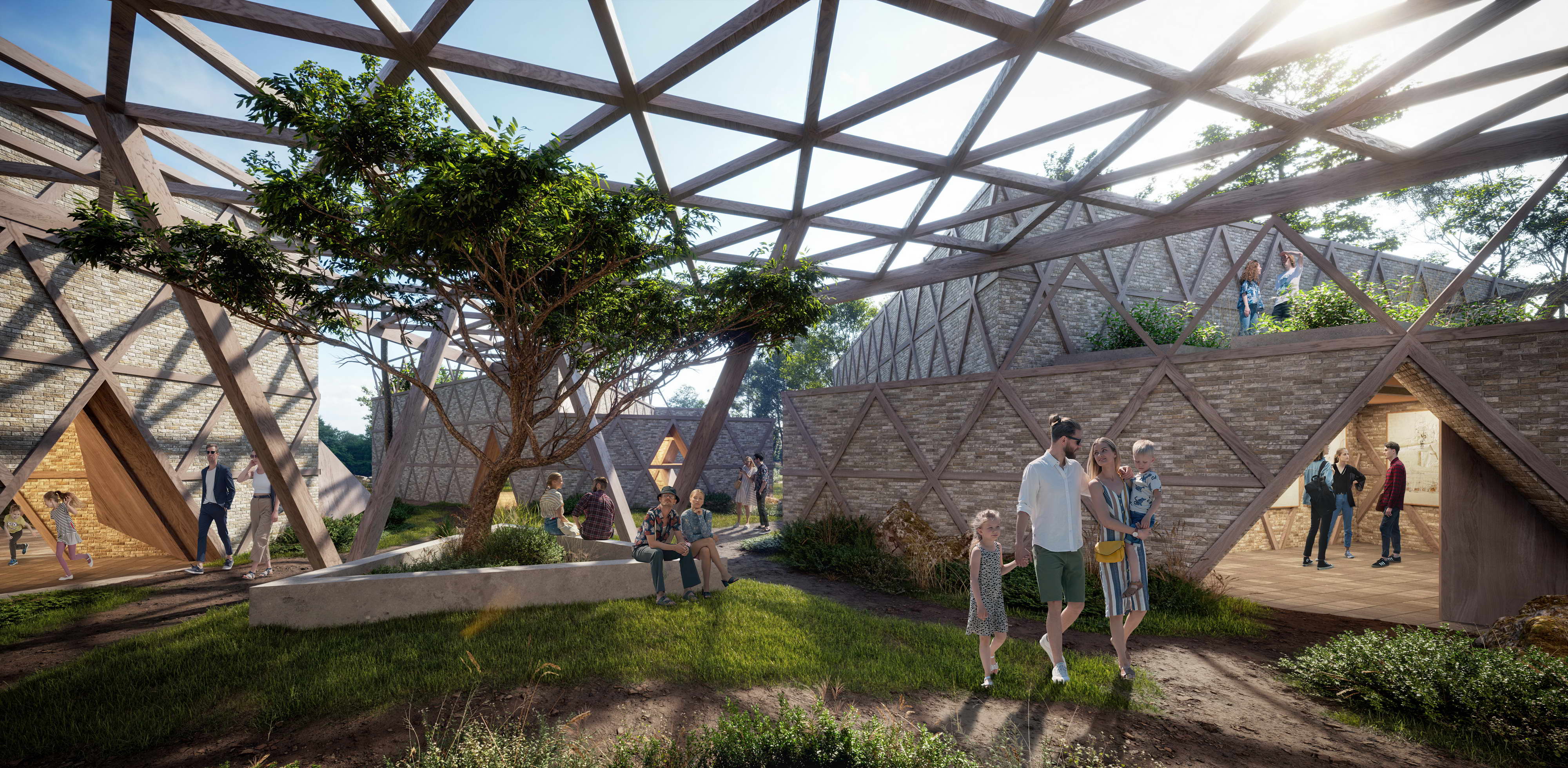
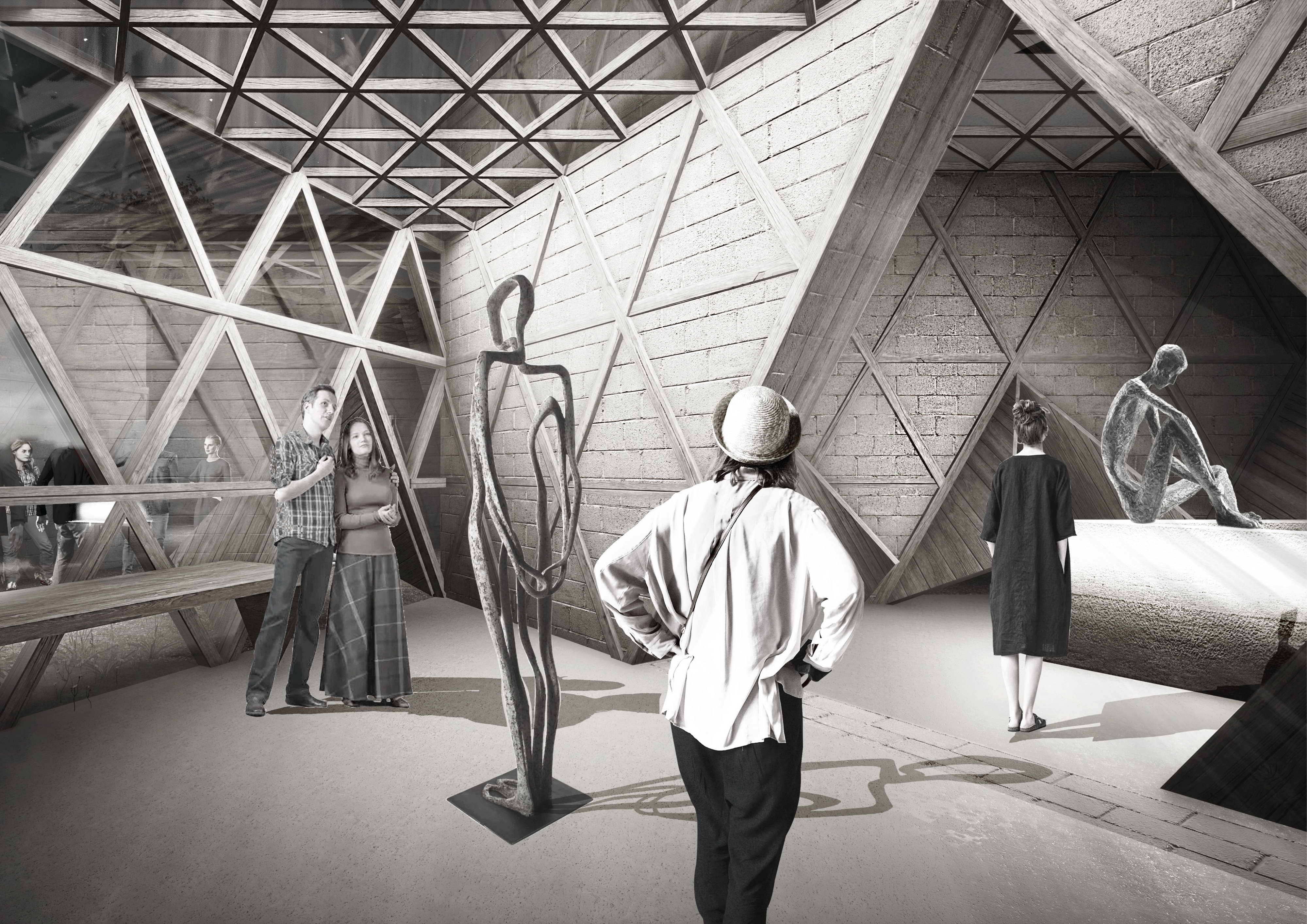
立足本地,可持续发展
THINK LOCAL, BE SUSTAINABLE
noa*希望建筑的最终目的是社会性的,并且在设计方面是可持续的,包括材料的选择和施工技术。对于这个概念,团队选择了天然材料和外露的结构系统,易于组装和拆卸。在“标准组件”中,外墙由裸露的木结构系统和粘土砖墙组成,与透明部分交替,这些部分也根据三角形的几何形状进行了调制。可持续方法必须是设计的核心:因此,材料的最终选择必须根据项目环境进行验证,以检查它们在现场的实际可用性、与气候条件相关的导热性、加工过程中的能源消耗以及必要的专业技能的存在。同样,精心设计的装置可以对建筑的生态足迹产生积极影响。文化中心包括使用绿色屋顶和凉棚、光伏系统、雨水收集系统、交叉通风系统以及池塘和林区,以适应温带小气候。
noa* wanted anarchitecture that is social in its final purpose, and sustainable in all the aspects of the design, including the choice of materials andconstruction techniques. For this prototypewere chosen natural materials and an exposed construction system, easy to assemble and dismantle. In the “standard package”, the façade is made up of an exposedwoodenstructural system and a wall of clay bricks, alternating with transparentparts, which have also beenmodulated on the geometry of the triangle. The sustainable approach must be central in the design: therefore, the final choice ofmaterials must be verified with the projectenvironment, to check their actual availability on-site, their thermal conductivity in relation to the climatic conditions, the energyconsumption in their processing and the presenceof the necessary know-how skills. Similarly, a careful design of the installations can have a positive impact on the ecologicalfootprint of the building. The culturalcentre includes the use of green roofs and pergolas, photovoltaic systems, rainwater collecting systems, cross-ventilation systemsas well as ponds and wooded areas for atemperate microclimate.
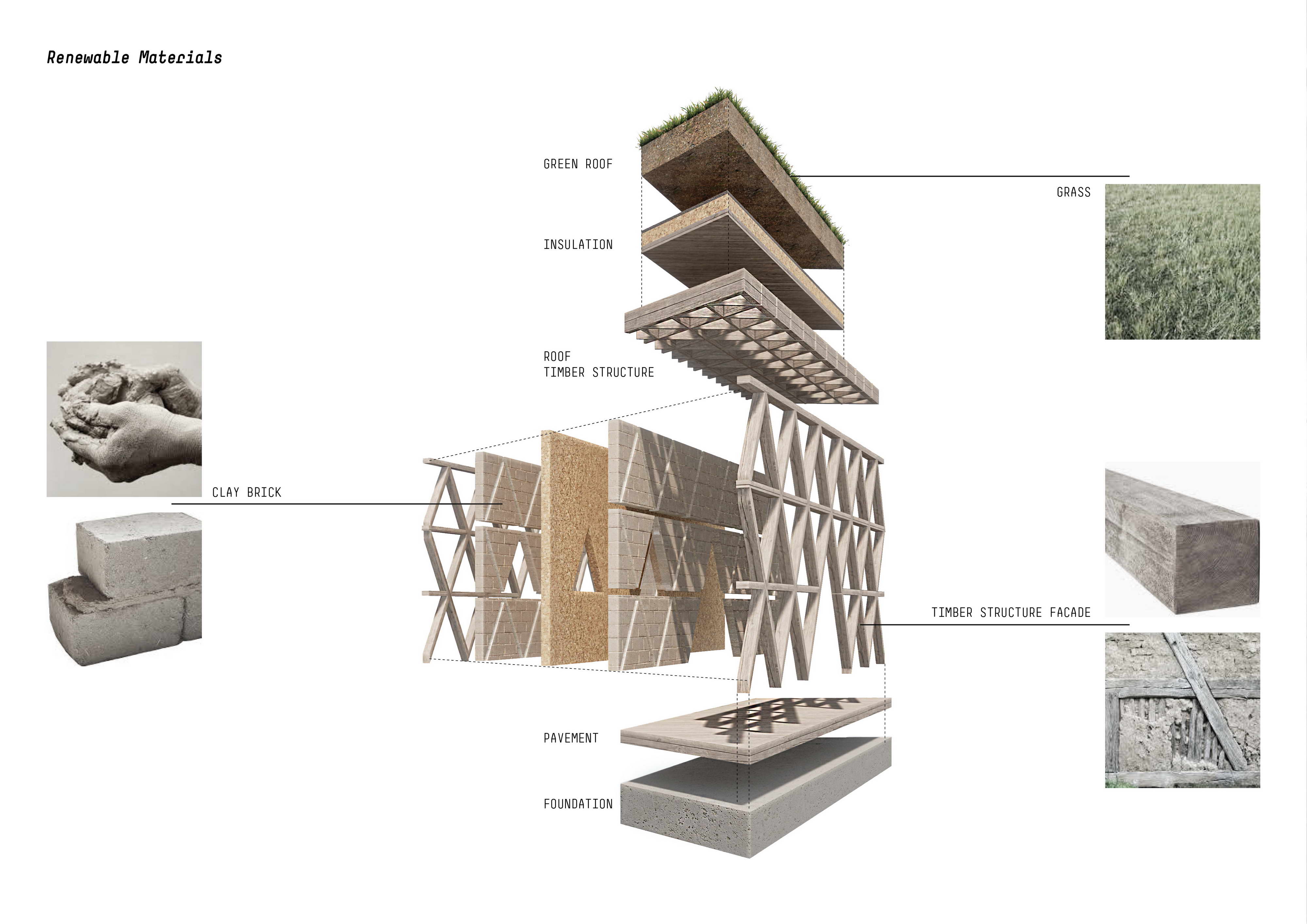
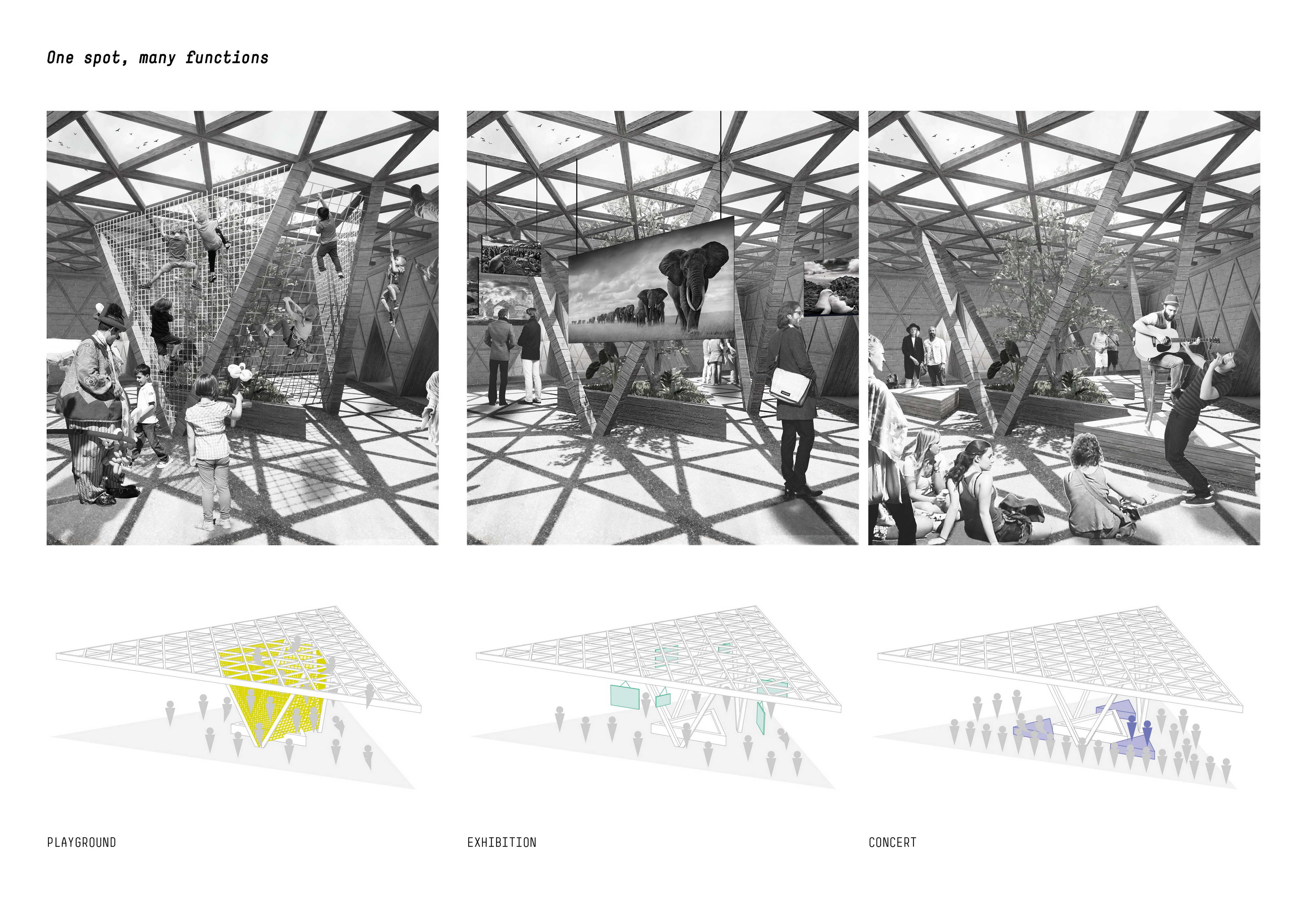
在这个项目中,noa*设想了一个灵活的建筑,能够对环境的变化做出反应,同时能够适应不同的尺度环境,从宏观项目到街道设施。这个文化中心可以位于火山岛上的海滩上、斯堪的纳维亚森林中、底特律的废弃地段或柏林社会主义住宅的屋顶上。它是一种能够根据环境的形态和气候要求改造自身的建筑,同时保持建筑与居住者之间的社会性和互动性。
With thisproject, noa* envisages a flexible architecture, capable of reacting to changes in context and at the same time of working on different scales,from the macro-project to the streetfurniture. This cultural centre could be located on a beach on a volcanic island, in the Scandinavian forests, on an abandoned lot inDetroit or on the roofs of socialisthousing in Berlin. It is an architecture able to mould itself to the morphological and climatic requirements of the context whilemaintaining intact the concept of sociality andinteraction between the building and those who live in it.
▽建筑结构
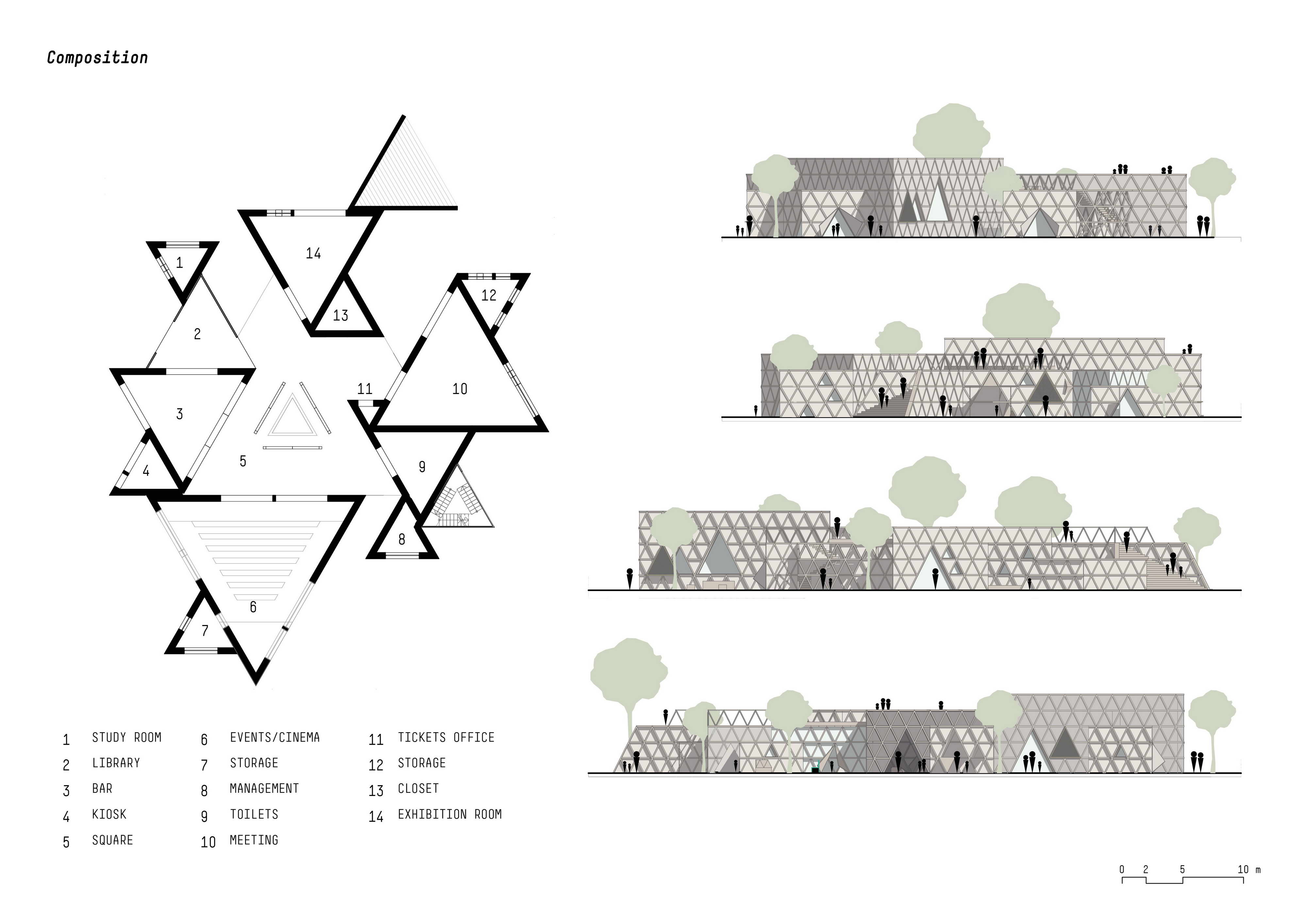
▽立面变形示意

▽功能
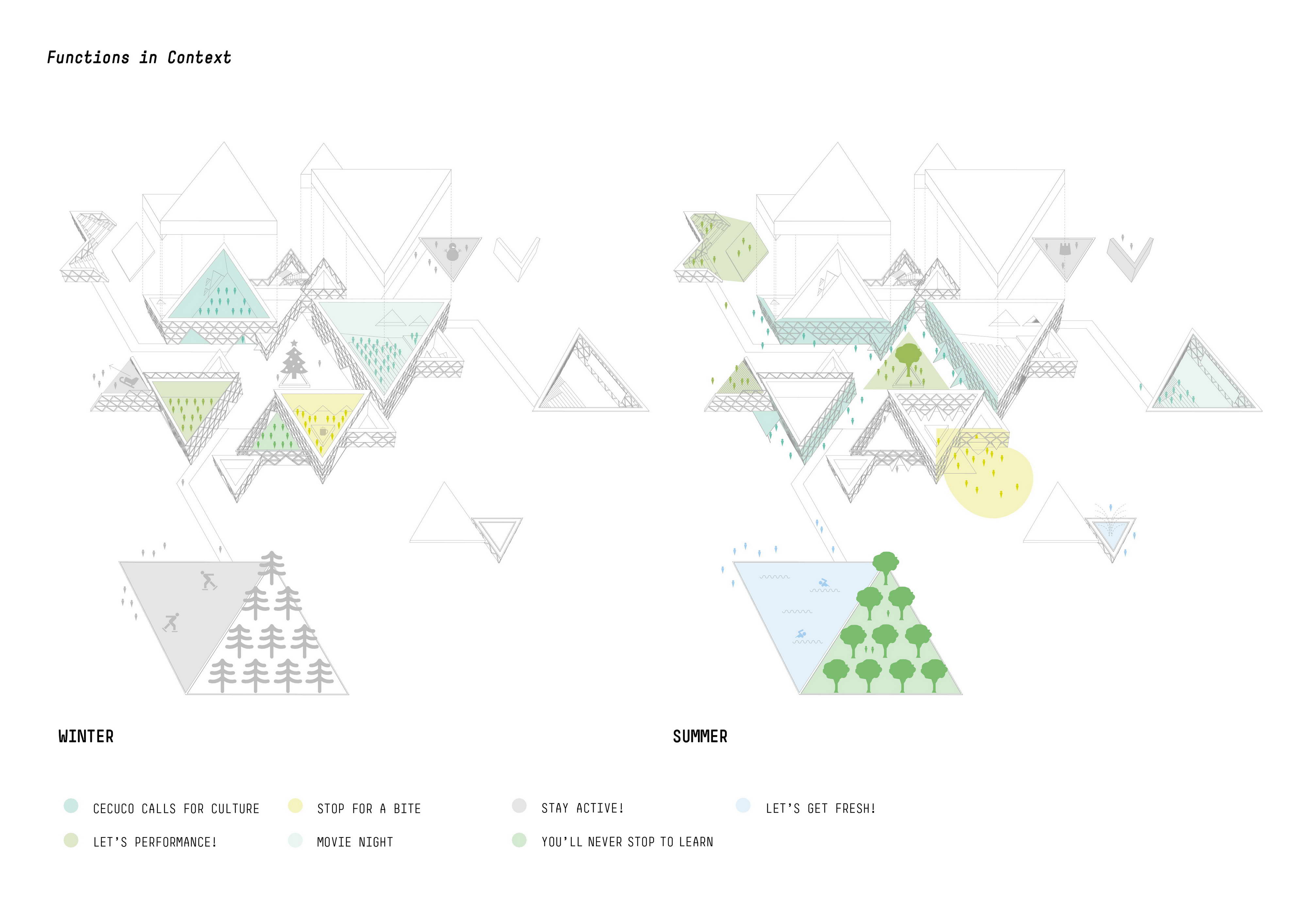
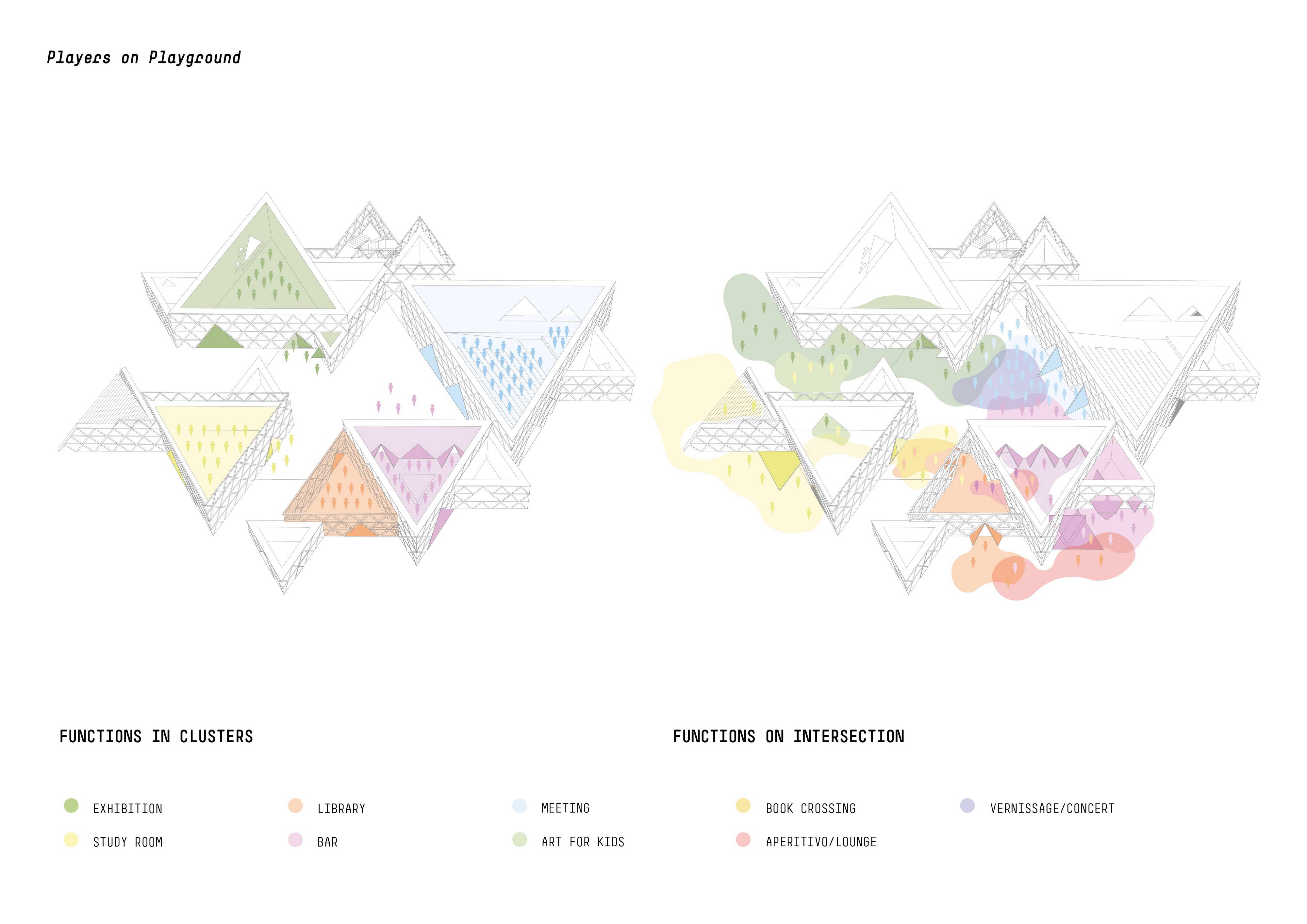
▽与自然对话
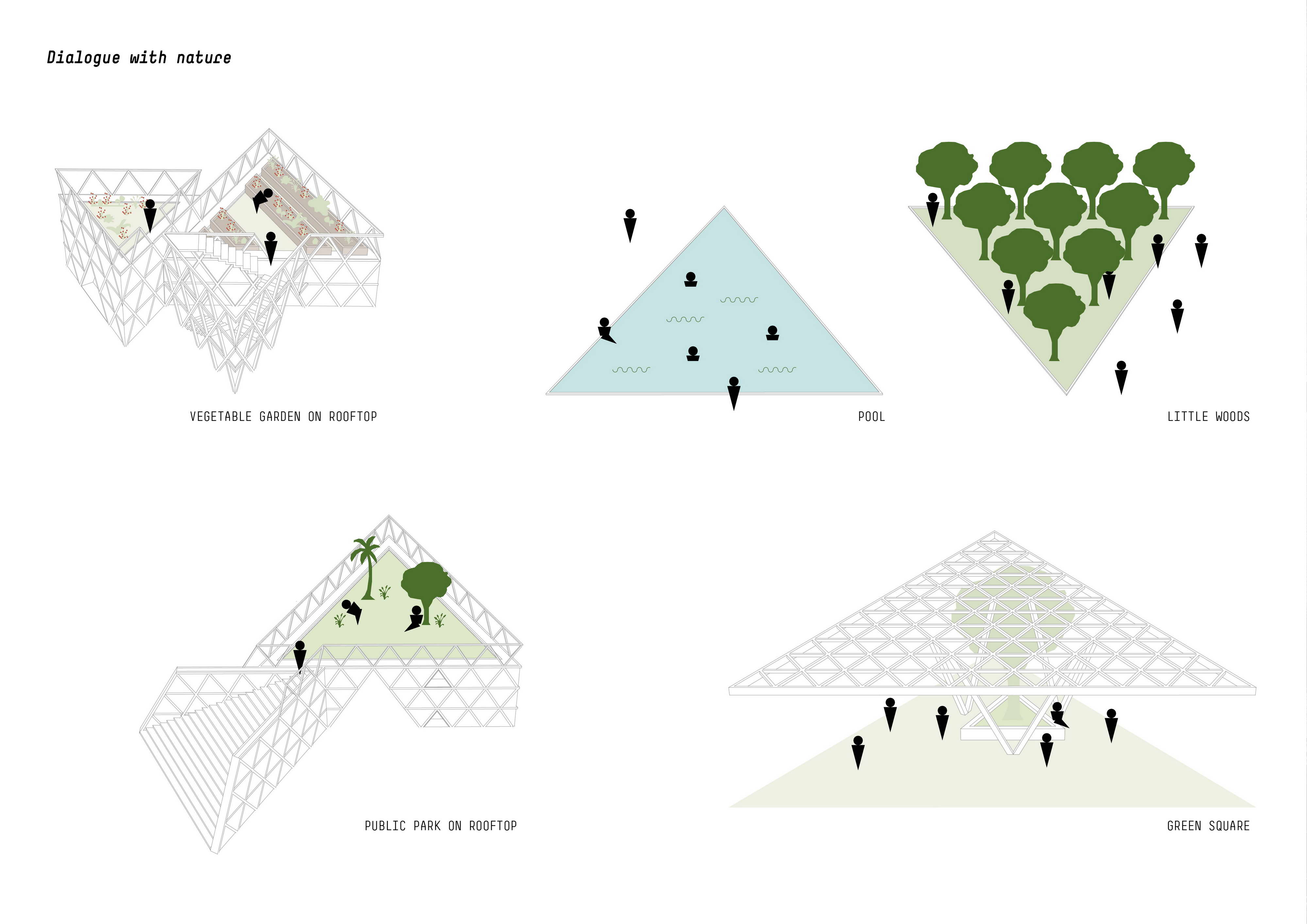
▽能源循环系统
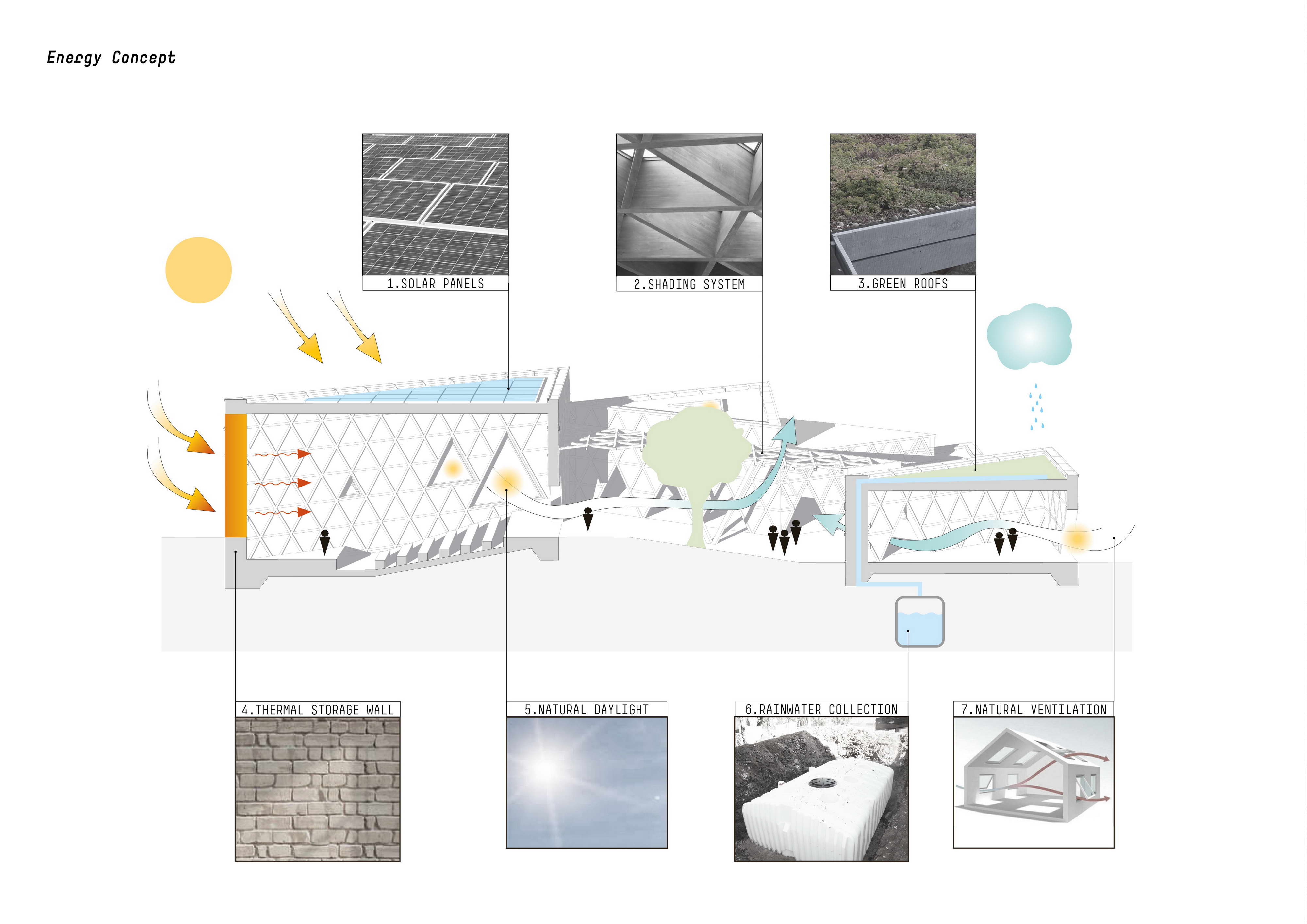
Project name: CeCuCo - Centre for Culture and Community
Typology: Cultural Centre
Phase: Research project
Architecture: noa* network of architecture